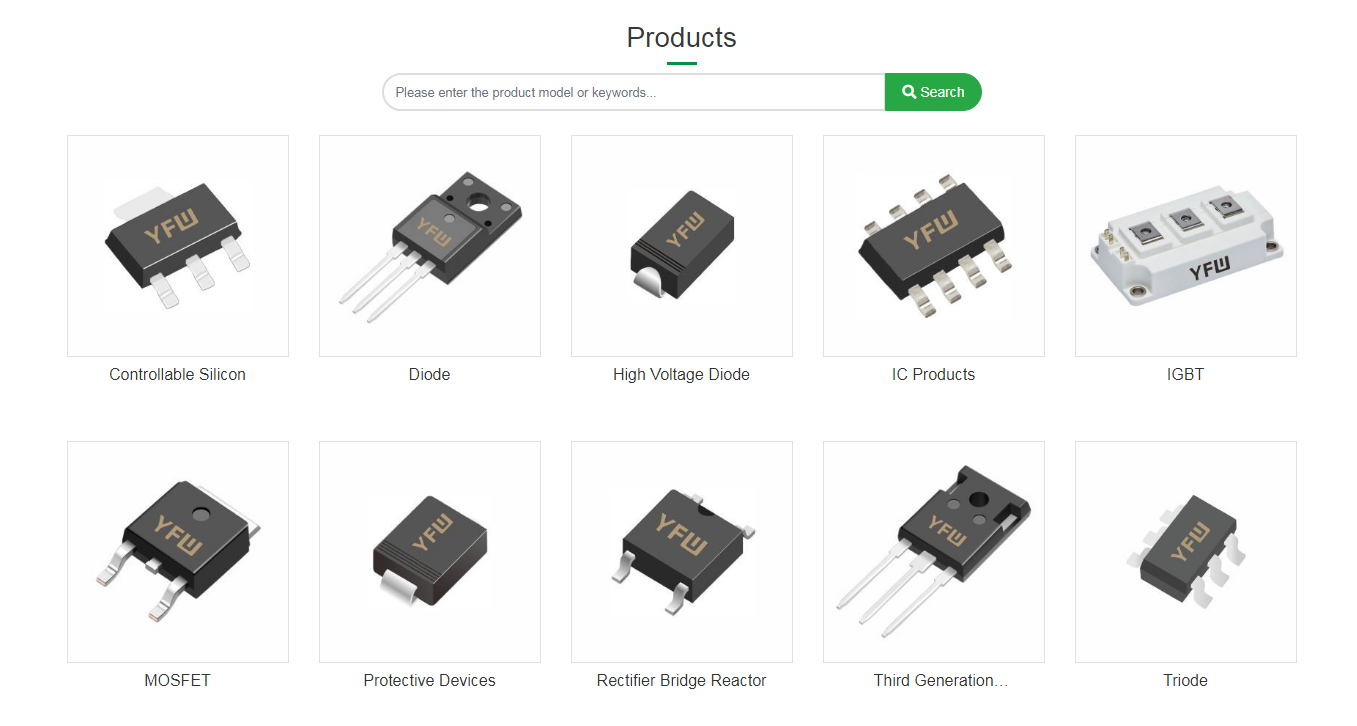Date:2025-03-18 Categories:Industry News Hits:989 From:Guangdong Youfeng Microelectronics Co., Ltd(YFW)
bidirectional trigger diode, also known as a bidirectional silicon controlled rectifier, bidirectional thyristor, or DIAC, is an electronic component that can conduct electricity in directions. Unlike a unidirectional trigger diode (DIAC), a bidirectional trigger diode does not have a distinction between "anode" and "cathode" but instead has two electrodes, commonly referred to as A1 and A2 or MT1 and MT2. Its feature is that it has similar electrical characteristics in both directions.idirectional trigger diodes are widely used in AC circuits as triggering elements for control devices, such as in dimmers, motor speed controllers, and electronic switches. Operatingiple of a Bidirectional Trigger Diode The operation of a bidirectional trigger diode relies on its V-I (voltage-current) characteristics. Under normal conditions a bidirectional trigger diode exhibits a high-impedance state in both directions, thus preventing the flow of current. When the voltage between the electrodes increases to a certain extentknown as the breakover voltage or trigger voltage), the bidirectional trigger diode suddenly changes from a high-impedance state to a low-impedance state, current to flow through. This transition occurs very rapidly, allowing the bidirectional trigger diode to be used as a high-speed switch. Detection Methods for the Break Voltage of a Bidirectional Trigger Diode The breakover voltage of a bidirectional trigger diode is one of its important parameters and typically needs to be measured. Here are several common detection methods: 1. Direct Voltage Testing Method: A variable DC power supply is connected to the two ends of the bidirectional trigger diode with a current-measuring instrument (such as an ammeter) connected in series. Gradually increase the output voltage of the power supply until a sudden increase in current is observed and the voltage at that time is the breakover voltage. This method is simple and intuitive but may not be suitable for bidirectional trigger diodes with very low breakover voltages. 2. AC Bridge Method: The AC bridge method can provide more precise measurements. In this method, the bidirectional trigger diode is placed in a specific bridge circuit, and breakover voltage is measured by balancing the bridge by adjusting other components of the bridge. When the bridge is balanced, the AC voltage across the bridge is the breakover voltage of theirectional trigger diode. The advantage of this method is that it can measure the breakover voltage under AC conditions, which is closer to the actual working conditions of the bidirectional triggerode. 3. Oscilloscope Method: Connect the bidirectional trigger diode to a circuit consisting of a resistor and a power supply, and use an oscilloscope monitor the voltage across the bidirectional trigger diode. By gradually increasing the power supply voltage until the oscilloscope shows a voltage jump, the breakover voltage can be determined. This allows for a direct observation of the breakover voltage and can be used for dynamic testing. 4. Pulse Testing Method: Considering that bidirectional trigger diodes may be used high-speed switching conditions, the pulse testing method can provide a measurement method that simulates actual working conditions. By applying short pulse voltage to the bidirectional trigger diode and its response using equipment such as an oscilloscope, the breakover voltage can be determined. This method is particularly useful for testing the dynamic characteristics of bidirectional trigger diodes. Summary The bidirectional trigger diode is an important electronic component widely used in various control and regulation circuits. Accurate measurement of its breakover voltage is crucial for ensuring the proper of the circuit. Through the above several commonly used detection methods,

Previous:A brief analysis of the working principle of the dual-color light-emitting diode
Next:NZT560A 1A 80V SOT-223 Marked NZT560A Small Signal Transistor Y Micro Brand